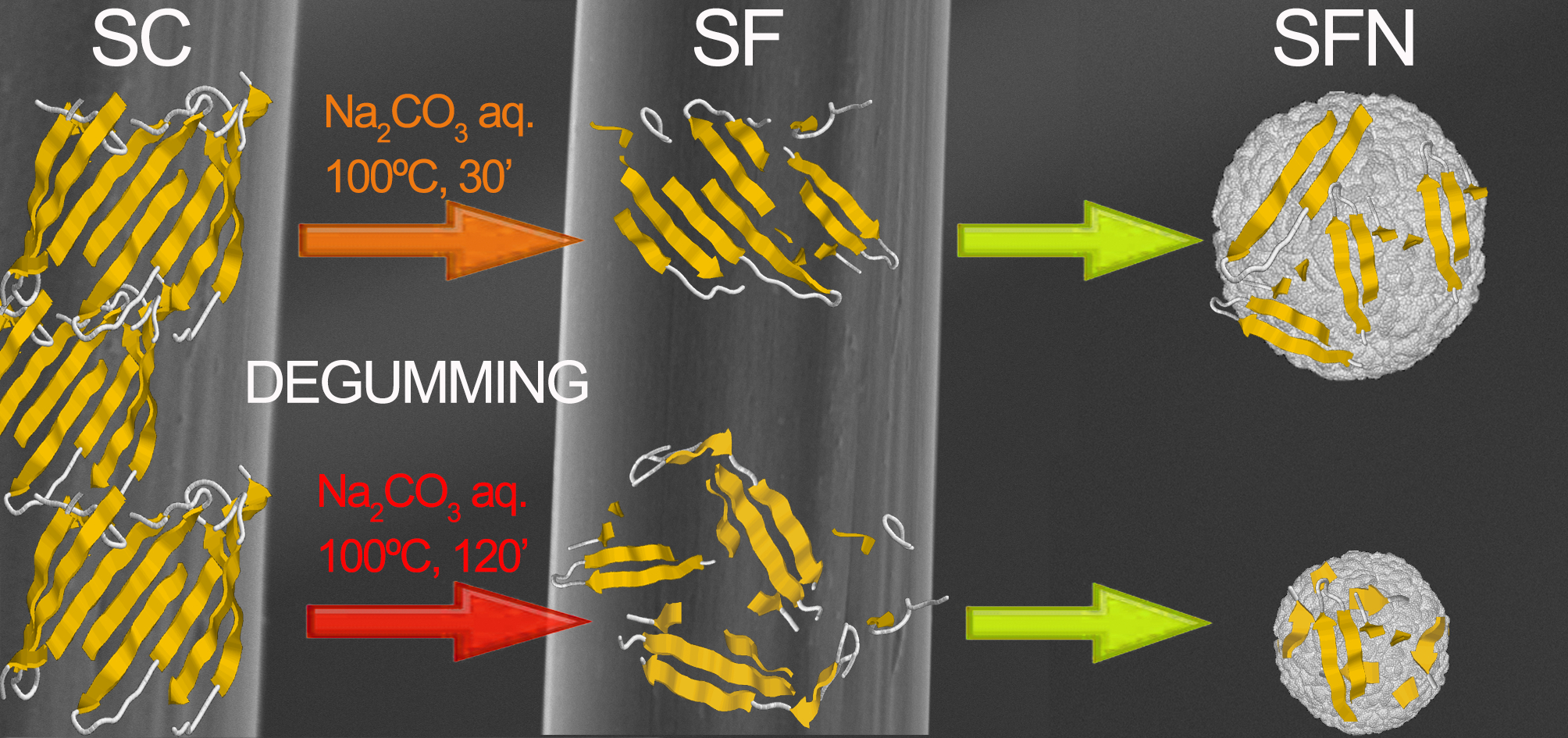In recent years, numerous research studies have shown the excellent characteristics of silk fibroin nanoparticles as a vehicle for drugs delivery and it is foreseeable that their production could reach industrial scale in the coming years. For this reason, it is essential to know all the parameters that affect the formation of nanoparticles in order to standardize the process. Several studies have stated that the process used for sericin removal (degumming) from silk cocoons has a strong impact in the silk fibroin integrity and their mechanical properties after processing it into biomaterials. In this work, silk cocoons were degummed following four standard methods: autoclaving, short alkaline (Na2CO3) boiling, long alkaline (Na2CO3) boiling and ultrasounds. The resultant silk fibroin fibers were dissolved in the ionic liquid 1-ethyl-3-methylimidazolium acetate and used for nanoparticle synthesis by rapid desolvation in polar organic solvents. The relative efficiencies of the degumming processes and the integrity of the resulting fibroin fibers obtained were analyzed by weight loss, optical microscopy, thermogravimetric analysis, infrared spectroscopy and SDS-PAGE. Particle sizes and morphology were analyzed by Dynamic Light Scattering and Field Emission Scanning Electronic Microscopy. The results showed that the different treatments had a remarkable impact on the integrity of the silk fibroin chains, as confirmed by gel electrophoresis which can be correlated with particle mean size and size distribution changes. The study confirm that all the parameters of the process must be controlled in order to reach an optimum reproducibility of the nanoparticle production.

